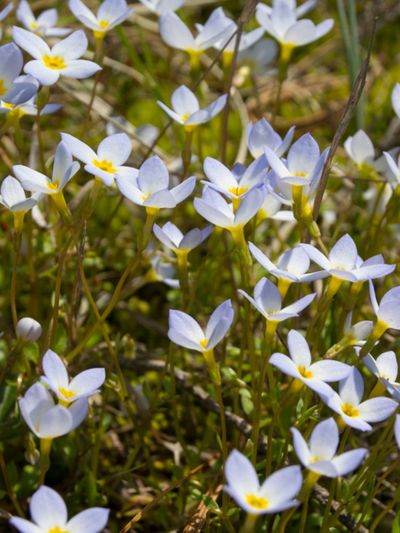Other info says they’re called Quaker lady bluets because the pale color of the flower is similar to the shades of fabric used in making dresses worn by Quaker ladies. Whatever the reason for the name, finding wildflower bluets in your yard or garden is a charming addition.
Quaker Lady Bluets
The common name of wildflower bluets, of course, refers to the color of the tiny, mounding clumps of flowers, interpreted from the Latin (caerulea, from caeruleus). Also called azure bluets, some varieties are native to southern areas of Canada and Nova Scotia. The perennial flowers are readily visible in New England in spring, and found as far south as Florida and Texas. The tiny flowers of Quaker lady bluets may also be in shades of white or pink, having yellow centers.
Uses for Bluets in the Garden
Quaker lady bluets self-seed abundantly and once you see a stand of them, you’re likely to find more growing bluets as seasons pass. Wildflower bluets are commonly found in lightly shaded wooded areas, but as seeds are dispersed by winds and birds, you’ll find them growing in other areas as well. Bluets in the garden are an effective ground cover under taller spring-blooming flowers. Botanically called Houstonia caerulea, Quaker lady bluets bloom most profusely in spring, but some flowering continues through summer and fall. Bare areas of the landscape appear covered with a blue carpet when masses of these flowers are in bloom. Easily transplanted, the gardener can use wildflower bluets to encircle stepping stones, line garden pathways or accompany other perennial wildflowers in the garden. To move clumps of the little flower to another area, simply dig them and replant on a cloudy day. They prefer moist, organic soil that is slightly acidic, such as the soil where they grow in shady woodlands. Plant bluets in sunny or shady locations, avoiding hot afternoon sun. When the dainty blooms appear in your garden, you’ll be able to explain “Why are bluets called Quaker ladies”, and possibly share a few clumps with gardening friends.
